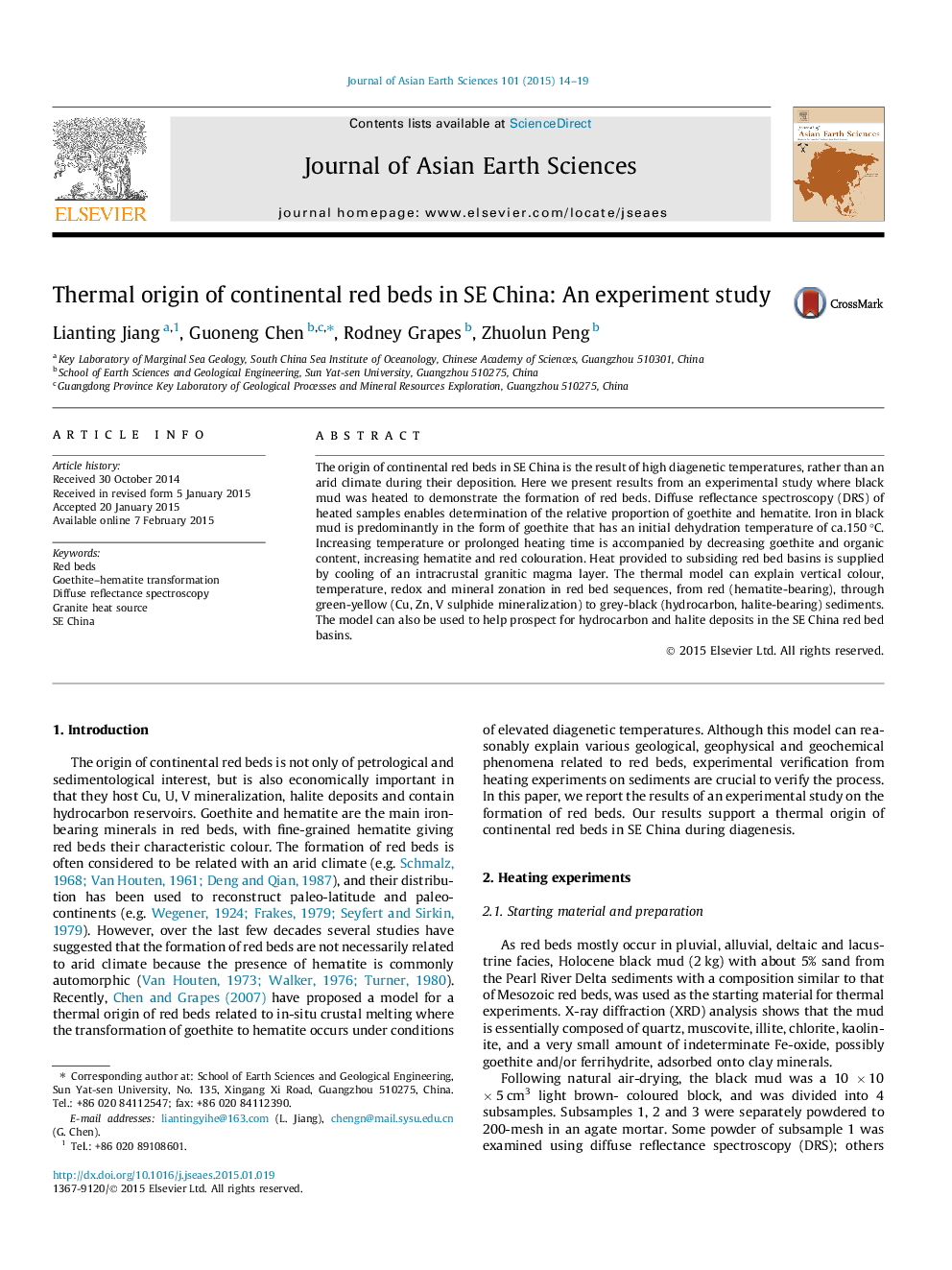| Article ID | Journal | Published Year | Pages | File Type |
|---|---|---|---|---|
| 4730395 | Journal of Asian Earth Sciences | 2015 | 6 Pages |
•Continental red beds in SE China originated from high diagenetic temperature.•Colouration of red beds is simulated by heating experiments.•High temperature causes red colouration of sediment and decomposition of organic material.
The origin of continental red beds in SE China is the result of high diagenetic temperatures, rather than an arid climate during their deposition. Here we present results from an experimental study where black mud was heated to demonstrate the formation of red beds. Diffuse reflectance spectroscopy (DRS) of heated samples enables determination of the relative proportion of goethite and hematite. Iron in black mud is predominantly in the form of goethite that has an initial dehydration temperature of ca.150 °C. Increasing temperature or prolonged heating time is accompanied by decreasing goethite and organic content, increasing hematite and red colouration. Heat provided to subsiding red bed basins is supplied by cooling of an intracrustal granitic magma layer. The thermal model can explain vertical colour, temperature, redox and mineral zonation in red bed sequences, from red (hematite-bearing), through green-yellow (Cu, Zn, V sulphide mineralization) to grey-black (hydrocarbon, halite-bearing) sediments. The model can also be used to help prospect for hydrocarbon and halite deposits in the SE China red bed basins.
Graphical abstractFigure optionsDownload full-size imageDownload as PowerPoint slide
